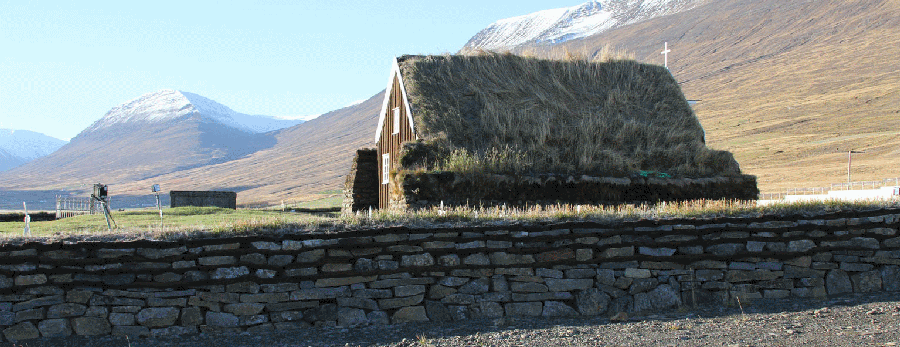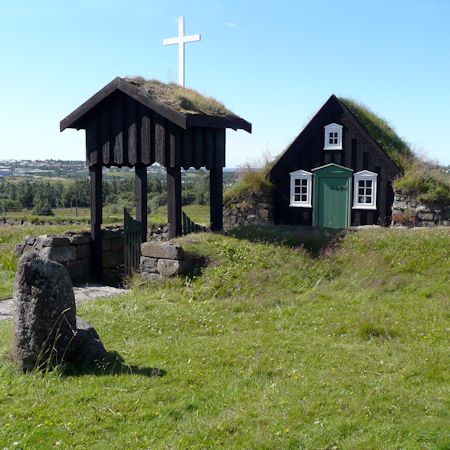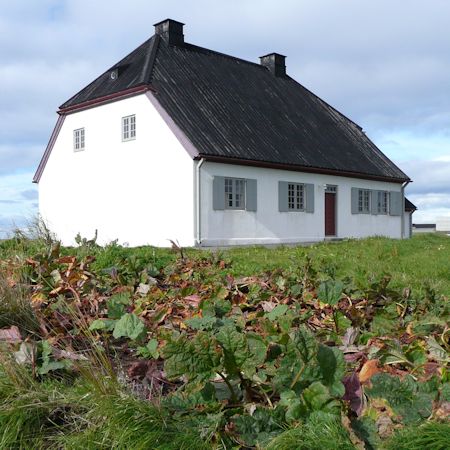ICELANDIC CULTURAL HERITAGE
There has been a lack of accessible books about Iceland's cultural heritage to guide visitors on their travels around the country, and to be taken home when they leave. And in fact Iceland's culture has not been given the prominence it deserves in promotion of the country. So it is time to redress the balance.
The Salka publishing house has published the first four volumes of a new series on Iceland's Cultural Heritage by designer Bj÷rn G. Bj÷rnsson. Published in Icelandic and English editions, the books are: Writers' Homes, Turf Churches, 18th-century Stone Buildings and Large Turf Houses.
Iceland's Cultural Heritage is an innovative series, exploring historical places, cultural sites and masterpieces of Icelandic architecture. In a compact and handy format, the books are lavishly illustrated, with concise informative texts. Each volume includes a map showing all the locations in the book, together with useful information. The new series meets a real need, as such publications have been lacking, while the emphasis has tended to be on the glories of Icelandic nature.
The content of the first four volumes is:
LARGE TURF HOUSES
This book showcases Iceland's large turf houses: ┴rbŠr in ReykjavÝk, GlaumbŠr in Skagafj÷rur, Laufßs in Eyjafj÷rur, Grenjaarstaur in Aaldalur, Ůverß in Laxßrdalur, Bustarfell in Vopnafj÷rur and Keldur in Rangßrvellir. We also take a look at the composite farmhouse at the Skˇgar Heritage Museum.
18TH CENTURY STONE BUILDINGS
Eight fine stone buildings were constructed by the government in 1753-77: four residences for officials, and four churches. Designed by Denmark's leading court architects, they combine simplicity with elegance. Those are Viey House, Hˇlar Cathedral, Nes House, Bessastair House, the former jail in ReykjavÝk, now Government House, and finally three churches: on Viey island, the Westman Islands and at Bessastair in 1777.
TURF CHURCHES
Today only five turf churches remain standing in Iceland, more or less in their original form: VÝimřri Church and Gr÷f Church in Skagafj÷rur, SaurbŠr Church in Eyjafj÷rur, Hof Church in ÍrŠfi and N˙psstaur Chapel. A sixth church, at the ┴rbŠr Museum in ReykjavÝk, was constructed from the timbers of an old church at Silfrastair in Skagafj÷rur.
WRITERS' HOMES
In this volume we visit the former homes of some of Iceland's literary giants, and museums that commemorate them, from the medieval geothermal pool of Snorri Sturluson at Reykholt to the swimming pool at Glj˙frasteinn, home of Nobel prizewinner Halldˇr Laxness. In the north we visit the birthplace of Jˇnas HallgrÝmsson, and in Akureyri the homes of three writers: Jˇn Sveinsson, DavÝ Stefßnsson and MatthÝas Jochumsson. Gunnar Gunnarsson's
home at Skriuklaustur is unique and impressive, and at Hali in the south we learn about ١rbergur ١rarson.
English translations are by Anna Yates. MargrÚt HallgrÝmsdˇttir, Director of the National Museum of Iceland, contributes a foreword to Turf Churches.
Texts and photographs are by Bj÷rn G. Bj÷rnsson, who also designs the books.
|



